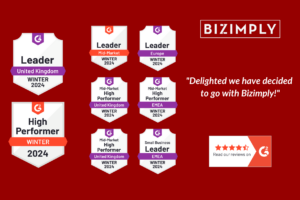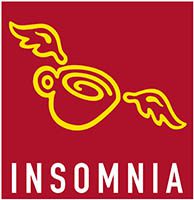Next up in our series of ‘Surviving the Cost of Living Crisis’ is a discussion on how you can keep your business surviving and thriving.
What will you learn in this blog?
- What is inflation?
- How to survive inflation and cost of living,
- Changes you can make in your business to survive.
The cost of living is increasing at its fastest rate in 40 years, largely as a result of rising food and energy prices.
In response, the Bank of England has increased interest rates by 0.75 percentage points to 3%, the biggest hike in more than three decades.
As a business, how can we overcome or strive through this cost of living crisis?
What is inflation?
Firstly, let’s do a quick recap on what inflation is.
Inflation is the increase in prices of goods and services, often as a result of decline in purchasing.
The three main causes of inflation are demand-pull, cost-push, and inflation expectations.
Smaller businesses are really feeling the brunt of this crisis and their survival techniques are wearing thin.
But these businesses are smart at being resourceful; reviewing alternative revenue streams and getting the most out of their operations.
We’ll now discuss some strategies and tips to help you along.
What can businesses do to overcome rising costs?
Adopt technology to drive growth
With high inflation and runaway energy prices squeezing household incomes, spending has fallen dramatically. In turn, this will reduce footfall in your shift based business, people will be spending less on dining out, on clothes and shoes or even on fun activities.
Technology like workforce management software can help you control your labour costs, with optimised scheduling features you can have the right amount of staff on to cover demand and therefore, maintain or increase profits in your business.

It means you’re not overspending on staffing costs and can use the money elsewhere in the business. This is just one of the many benefits!
Alongside improved scheduling, a workforce management software will ensure accurate and faster payroll, better management of time off requests and efficient onboarding,
Increasing efficiency and automating operations is a must in today’s society.
According to McKinsey, two-thirds of businesses are trying to automate at least one process.
Those experiencing higher success did so with software that is scalable as the business grows and has a strong human-in-the-loop element.
Today, online shopping is extremely common. The pandemic enhanced online shopping, which meant businesses had to change their strategy to meet customer demands.
Even as restrictions eased and businesses reopened, online shopping remained to be in high demand, which saw smaller businesses having to move their businesses online as well as customer facing.
Focus on Value
Trying to remain profitable and competitive in a cost of living crisis isn’t easy, but focusing on providing value will certainly help you stand out from the competition.
This doesn’t mean you should lower the quality of goods or services.
In fact, quite the opposite, you should be maintaining or increasing quality where possible, whether it’s in your products, but especially in your customer service.
Re-evaluate what you have on offer, ask yourself; ‘Is this what my customers need?’ in this current climate. Remember, people are cutting back, so, what they once defined as a valuable purchase, may not be the case anymore.
Your strategy should also look at eliminating unnecessary costs, and making sure you have competitive pricing. While there are many ways businesses have dealt with rising costs over time, focusing on providing value overrides the rest.
Prioritisation changes in a Cost of Living crisis
Do you often find yourself spending too much time on admin tasks and question whether it is worth the effort?
Recognise where you’re spending too much time on certain areas of work, see if it is necessary or if there are others in the workplace that could help.
For example; if you manage the social media or the website of the business, could another member of staff help out in this area? Or a few members? This could be a great opportunity for them too and who knows, they may get extremely creative and start a Tik Tok or take great pictures for Instagram that could lead to extra footfall.
This will allow you to focus your efforts on more important areas of the business that may require your attention.

Lower your Operating Expenses
If you want to lower your operating expenses while still providing value for your customers, you need to start thinking about cutting costs somewhere.
Reduce excess cost and waste such as; transportation costs by decreasing product weight or size, doing bulk orders, reduce your product offering to those products you know that sell.
Think outside the box – in order to deliver more with less, you have to do things differently. Simply cut out everything that doesn’t make your business money.
Look at every aspect of your supply chain and decide what is essential:
- What products or supplies do I need?
- Which services are necessary?
- Can fixed or semi-fixed costs be made variable?
- Can I find a cheaper alternative?
- Should I move my services online?
Review your Supply Chain
One way to streamline processes and reduce costs is through supply chain management.
By efficiently tracking inventory, managing shipping schedules, and cutting unnecessary expenditures, you can be assured that your business will stay lean.
From logistics disruption, to workforce and labour. The recent pandemic has affected every part of the supply chain.
Your supplier’s input costs can impact your cost of goods sold, so keep an eye on them and make any necessary adjustments.
Rising costs may also be due to bad inventory management; you should regularly go through and check your stock, ensuring you have enough of all products and services. The last thing you want is running out of lots of products and people going elsewhere to purchase.
Focus on your Cash Flow
When times are tough, focus on your cash flow.
An efficiently run supply chain could help keep your cash flowing even when sales have dropped or demand increases unexpectedly. Also, working efficiently helps ensure a better run business, happier customers, a more productive team and happier employees too!
Make efficiency a top priority, these are the businesses that succeed!
Facing challenges is part of running a business, and the cost of living crisis isn’t short of contributing.
But the more practice you get, the more confident you will be in overcoming them.









